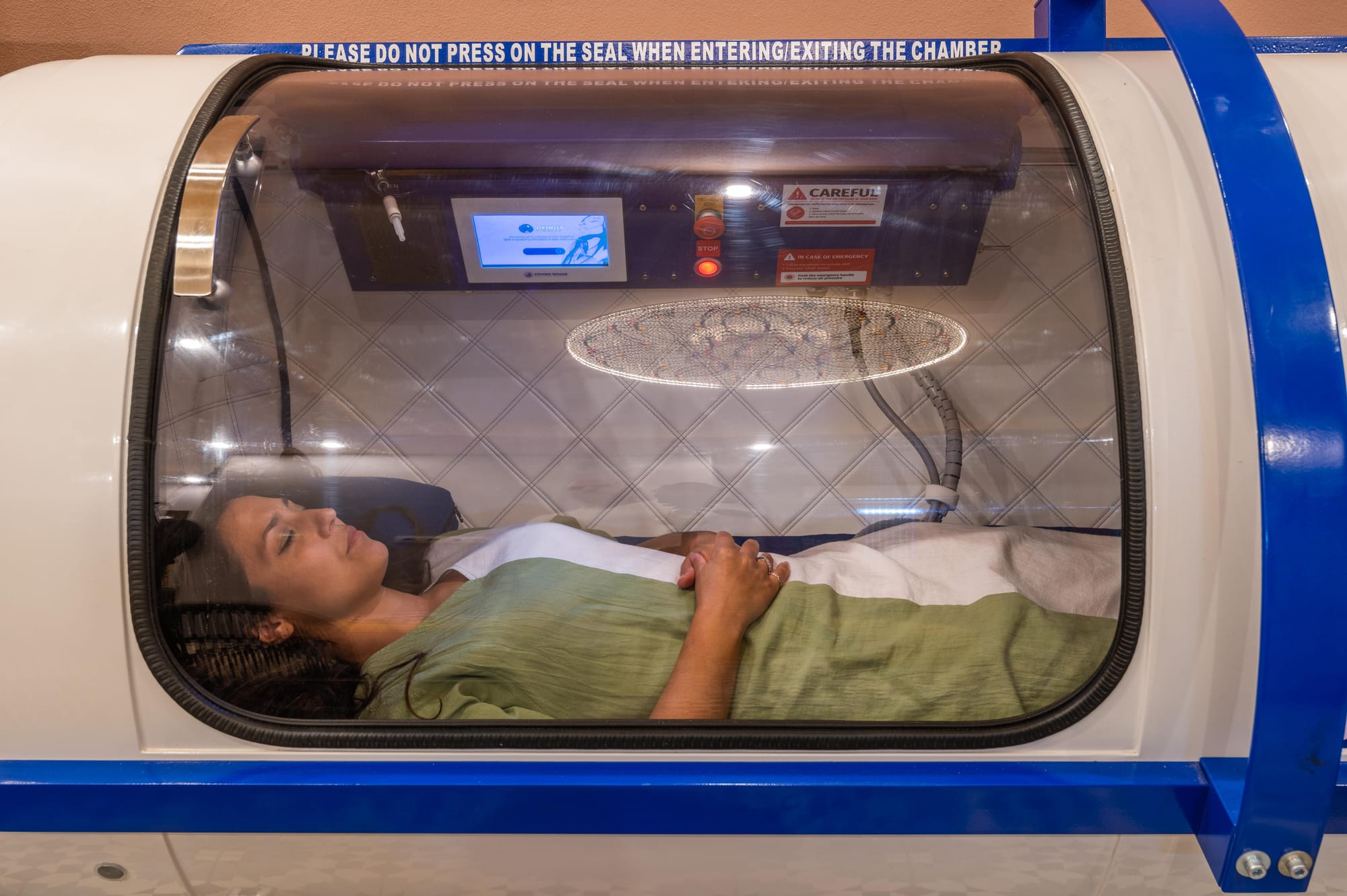Pathologies and diseases benefiting from Hyperbaric Oxygen Therapy

Therapy Muscle Injuries and Sports-Related Injuries: HBOT can promote tissue repair and recovery in cases of muscle injuries, including strains, tears, and overuse injuries. Athletes often use it to accelerate healing and reduce downtime.
Non-Healing Wounds: HBOT may help in the healing of chronic, non-healing wounds such as diabetic foot ulcers, pressure ulcers, and radiation-induced tissue damage.
Crush Injuries and Compartment Syndrome: HBOT can aid in the reduction of swelling and promote tissue repair in these types of injuries.
Severe Anemia: In cases of severe anemia when blood transfusions are not an option, HBOT can help improve oxygen delivery to tissues.
Stroke: There is ongoing research into the potential use of HBOT as an adjunctive therapy in stroke recovery.
Lyme Disease: HBOT has been explored as a complementary therapy for some patients with Lyme disease, although its efficacy remains unclear.
Psoriasis: HBOT has been explored as a complementary therapy for psoriasis, a chronic skin condition. While it may not provide a cure, it can potentially alleviate symptoms and improve the overall health of the skin.
Inflammatory Bowel Disease (IBD): Some studies have investigated the use of HBOT in managing symptoms of Crohn's disease and ulcerative colitis.
Ulcerative Colitis: Some studies have investigated the use of HBOT in managing symptoms of ulcerative colitis, a type of inflammatory bowel disease (IBD).
Vascular Conditions: HBOT can improve oxygen delivery to tissues and promote angiogenesis (the formation of new blood vessels), which may be beneficial in conditions related to poor circulation, such as peripheral arterial disease.
Avascular Necrosis: Also known as osteonecrosis, this condition involves the death of bone tissue due to poor blood supply. HBOT may aid in tissue repair and symptom relief.
Osteomyelitis: This is a bone infection that may benefit from HBOT when used in combination with other treatments like antibiotics and surgery.
Enhancing Immune Response: Some research has explored the potential of HBOT to boost the immune system's response to cancer cells. However, this application is still under investigation.
Decompression Sickness (DCS): HBOT is commonly used to treat divers with decompression sickness, also known as "the bends," which occurs when nitrogen bubbles form in the bloodstream during rapid ascent.
Gas Gangrene: This is a severe and potentially life-threatening form of tissue infection that can be treated with HBOT in addition to antibiotics and surgical intervention.
Carbon Monoxide Poisoning: HBOT can be used to rapidly eliminate carbon monoxide from the body and improve oxygen delivery to tissues in cases of poisoning.
Pain & Fatigue related Fibromyalgia: While the evidence is limited, some individuals with fibromyalgia have reported symptom relief and improved quality of life with HBOT.
Chronic Fatigue Syndrome (CFS): Some individuals with CFS have reported symptom improvement with HBOT, although more research is needed.
Peripheral Neuropathy: HBOT has been explored as a potential treatment for peripheral neuropathy, a condition characterized by nerve damage and pain in the extremities.
Complex Regional Pain Syndrome (CRPS): Some individuals with CRPS, a chronic pain condition, have reported pain reduction and improved function with HBOT.
Brain related
Autism Spectrum Disorder (ASD): Some parents have sought HBOT as a treatment for children with ASD, although scientific evidence supporting its efficacy remains limited and controversial.
Anoxic Brain Injury: HBOT can help improve oxygen supply to the brain, making it a potential treatment option for individuals with anoxic brain injuries caused by oxygen deprivation.
Alzheimer's Disease: Some research has suggested that HBOT may have a positive impact on cognitive function in individuals with Alzheimer's disease. The theory is that increased oxygen delivery to the brain may help improve brain function and slow down the progression of cognitive decline.
Multiple Sclerosis (MS): HBOT has been investigated as a potential treatment for MS to improve oxygen supply to affected areas of the brain and spinal cord.
Traumatic Brain Injury (TBI) and Post-Concussion Syndrome: Some studies suggest that HBOT may have a role in the management of certain brain injuries, though its use remains somewhat controversial.
Cerebral Palsy: HBOT has been explored as a potential treatment to improve symptoms in children with cerebral palsy, particularly those associated with brain injury.
Cancer related
Radiation Tissue Damage: Patients who have received radiation therapy as part of their cancer treatment may benefit from HBOT to mitigate tissue damage caused by radiation.
Post-Surgical Healing: HBOT can aid in the healing of surgical wounds and incisions for cancer patients who have undergone surgery.
Late Radiation Effects: In some cases, the side effects of radiation therapy may manifest long after treatment. HBOT can be considered to alleviate late radiation effects.
Adjunctive Cancer Treatment: HBOT may be used as an adjunctive therapy in combination with other cancer treatments, such as radiation therapy and certain chemotherapy drugs. The rationale is that increased oxygen levels can enhance the effectiveness of these treatments.
Radiation Cystitis and Proctitis: These are conditions resulting from radiation therapy for cancer treatment, which can cause inflammation of the bladder (cystitis) or rectum (proctitis). HBOT may help mitigate the tissue damage and improve symptoms.
Radiation Necrosis: In cases where radiation therapy leads to tissue death (necrosis), such as in the brain or other organs, HBOT can be used to promote tissue healing and reduce symptoms.